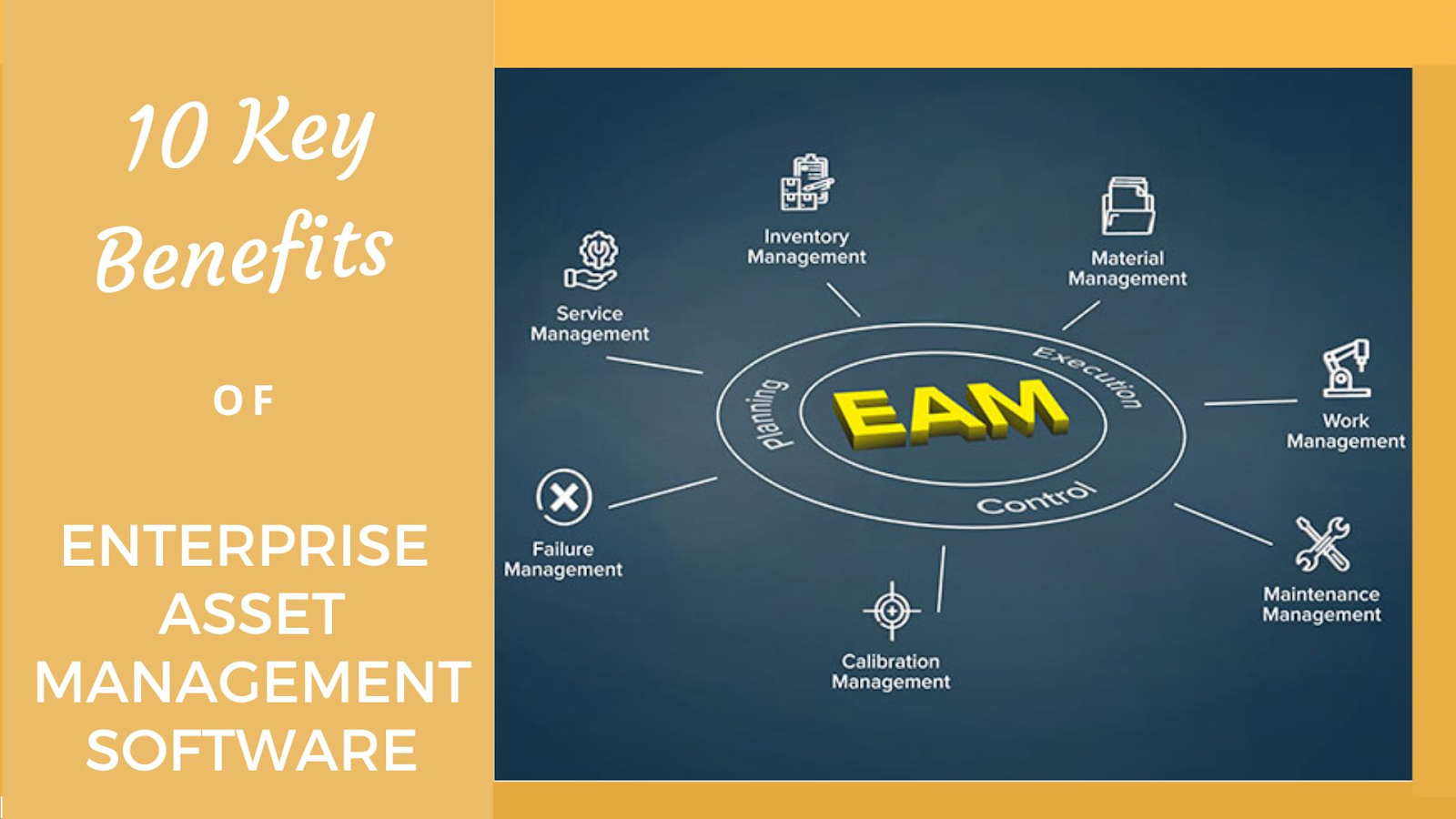
5 reasons why CMMS implementation fail
Madhurima Sanyal |
26 May 2024 |
07:11 AM
- Top 5 Reasons Why CMMS Implementations Fail
- Common CMMS Implementation Challenges
- Top Areas Where CMMS Implementations Fail
- Overcoming CMMS Implementation Challenges
- Exploring the Benefits of CMMS
- Conclusion

10 Key Benefits of Enterprise Asset Management Software
Shubham Vakharia 13 May 2024 | 10:24 AMDiscover the power of Enterprise Asset Management (EAM). Save costs, boost efficiency, and make informed decisions. EAM works for various industries. Get started today! ...
Understanding CMMS Implementation Challenges
CMMS solution is designed to simplify maintenance operations and management. It helps organizations track and manage maintenance operations, such as scheduling maintenance tasks, managing work orders, tracking inventory and assets, recording equipment maintenance history, and generating reports to analyze maintenance performance.
These systems are used across various industries, including manufacturing, healthcare, facilities management, transportation, and more, to streamline maintenance processes, improve equipment reliability, minimize downtime, and ultimately reduce operational costs. CMMS software can be deployed on-premises or accessed through cloud-based solutions, offering flexibility to implement, based on an organization's needs
Implementing CMMS can be intricate due to the nature of maintenance operations. Companies often struggle with difficulty of installing on-site software, its complexities, inadequate infrastructure requirements and resistance to change within organizations.
Top 5 Reasons Why CMMS Implementations Fail
CMMS implementation, while promising streamlined operations and improved maintenance management, often faces significant challenges leading to failure. Understanding these hurdles is crucial in navigating through a successful deployment.
CMMS implementation failures are often rooted in mismanagement of this process. Issues such as:
-
Lack of Comprehensive Planning: Inadequate planning at the onset can result in unanticipated challenges during implementation.
-
Inadequate Training: Insufficient training provided to employees can hinder their ability to utilize CMMS effectively.
-
Data Quality and Entry: Poor data quality or improper data entry procedures can render the system inefficient and unreliable.
-
Senior Management Buy-In: Without the support and active involvement of senior management, CMMS implementations can lack the necessary resources and commitment for success.
-
Data Migration challenge: Transferring data into CMMS without compromising on quality and accuracy can be tricky.
The failures are also caused due to a combination of technical, organizational, and strategic factors. Recognizing these challenges is the first step toward mitigating them effectively.
Common CMMS Implementation Challenges
Implementing a Computerized Maintenance Management System (CMMS) presents several obstacles that organizations often encounter. Understanding these challenges is pivotal for a successful implementation process.
Difficulty of Installing On-Site Software
The process of installing on-site CMMS software can be intricate, often involving technical complexities that demand precise execution. Organizations may face hurdles such as:
-
Integration Challenges: Adapting new software into existing systems while ensuring seamless integration poses significant challenges.
-
Hardware Compatibility: Ensuring that the hardware supports the CMMS software can be a critical challenge, potentially requiring system upgrades or replacements.
-
Configuration Complexities: Configuring the software to meet specific organizational needs without disrupting existing workflows can be daunting.
Complexity of On-Site Software
CMMS software often boasts extensive features and capabilities, but this complexity can become a hindrance during implementation. Key issues include:
-
User Training Requirements: Training team to navigate through a feature-rich CMMS demands time and resources, potentially causing delays in implementation.
-
Data Migration Challenges: Transferring existing data into the CMMS can be intricate, and ensuring accuracy without disrupting ongoing operations is crucial.
-
Customization Needs: Tailoring the CMMS to suit the unique requirements of the organization without overcomplicating the system architecture is a delicate balancing act.
By addressing these challenges early in the implementation phase, organizations can streamline the process and prevent CMMS implementations from failing.
Infrastructure Requirements
A successful CMMS implementation heavily relies on adequate infrastructure readiness. Challenges typically involve:
-
Hardware Compatibility: Ensuring that the existing hardware aligns with the CMMS software requirements can be a significant challenge. Upgrades or replacements might be necessary for seamless integration.
-
Network Stability: Reliable network connectivity is paramount for CMMS functionality. Organizations might face challenges in maintaining consistent and secure network connections.
-
Resource Allocation: Allocating sufficient resources for infrastructure setup, including hardware and networking, within budgetary constraints, can pose challenges.
Change Management
The implementation of a CMMS brings about organizational changes that require efficient management. Key challenges include:
-
Resistance to Change: Employees may resist adopting new processes and technologies, impacting the successful implementation of CMMS. Addressing this resistance is crucial for buy-in and successful execution.
-
Training and Skill Development: Inadequate training programs can hinder the transition to CMMS. Offering comprehensive team-training aligned with the needs of various user groups is essential.
-
Cultural Shift: Implementing CMMS necessitates a cultural shift towards proactive maintenance. Transforming the organization's mindset from reactive to preventive maintenance can be challenging.
Top Areas Where CMMS Implementations Fail
Certain key areas often become stumbling blocks, leading to implementation failures.
-
Inadequate Planning
Insufficient planning ranks among the primary contributors to CMMS integration failures. Challenges include lack of clear objective, poor resource allocation and ignoring user input.
-
Inadequate Training and Change Management
To prevent CMMS implementations fail necessitates comprehensive training and effective change management strategies.
-
Data Quality and Integration Challenges
Data forms the backbone of CMMS. Issues related to data quality and integration often contribute to implementation failures:
-
Data Migration Issues: Transferring data into the new CMMS without compromising quality and accuracy poses significant challenges.
-
Incomplete or Inaccurate Data: Implementing CMMS with inaccurate data can result in inefficiencies and errors within the system.
Overcoming CMMS Implementation Challenges
Strategies to Overcome CMMS Challenges
Implementing maintenance management software might present hurdles, but several strategies can effectively tackle these challenges:
Thorough Needs Assessment: Start by understanding your organization's unique requirements, ensuring alignment between the CMMS and your operational needs.
Comprehensive Training: Provide extensive training support to users to maximize the system's potential and avoid underutilization.
Ongoing Support: Offer continuous support to address issues promptly and ensure smooth operation.
Determining the Scope of Your Project: Before embarking on a CMMS system integration, it's crucial to determine the scope of the project:
-
Assess Organizational Needs
-
Set Clear Objectives
Planning Your Project
Efficient planning significantly contributes to the success of CMMS project:
-
Develop a well-defined timeline
-
Proper Resource Allocation
Preparing for Change
-
Anticipate and prepare for changes in workflows
-
Processes to ease the transition
Training
-
Provide thorough training support to all stakeholders
Data Gathering
-
Gather accurate maintenance data to maximize system's effectiveness
Data Entry
-
Streamlined data entry process to maintain accuracy
Reports and Analysis
-
Leverage the system's reporting capabilities to derive insights for better decision-making
Follow-up and Continuous Improvement
-
Implement a system of continuous improvement
-
Ensure regular checks and updates to optimize usage.
Links and Attachments
-
Utilize the capability of linking documents and attachments for better accessibility
Addressing User Adoption Issues
-
Proactively address user concerns during the adoption phase to encourage system usage.
Exploring the Benefits of CMMS
Understanding the Benefits of CMMS
Implementing a robust CMMS system is pivotal for businesses aiming to enhance operational efficiency and minimize unforeseen downtimes. Proptor presents a comprehensive solution tailored to streamline property management tasks, delivering an array of advantages to its users. Through Proptor, property managers gain the ability to efficiently supervise maintenance requests, automate rental payments, and seamlessly communicate with tenants via a centralized platform.
Here are the benefits of CMMS:
-
Enhanced Maintenance Efficiency: CMMS streamlines maintenance operations by scheduling tasks, managing work orders, and tracking maintenance history, minimizing equipment downtime.
-
Improved Asset Management: Efficiently manage and track assets, enabling better control over inventory levels, usage, and maintenance needs, thereby extending asset lifespan.
-
Optimized Inventory Control: CMMS assists in inventory management by tracking stock levels, automating reorders, and reducing excess or insufficient inventory, leading to cost savings.
-
Data-Driven Decision Making: Leveraging data analytics and reports provided by CMMS allows informed decision-making for maintenance strategies, resource allocation, and future planning.
-
Regulatory Compliance: Ensure adherence to industry regulations and compliance standards by utilizing CMMS to track and document maintenance activities, ensuring audits are smoother.
Conclusion
By leveraging the benefits of CMMS—enhanced maintenance efficiency, improved asset management, optimized inventory control, data-driven decision-making, and regulatory compliance—organizations can transform their maintenance operations, minimize downtime, and ultimately reduce operational costs.
Infrastructure readiness plays a pivotal role in preventing CMMS implementations fail, necessitating compatible hardware, stable network connectivity, and efficient resource allocation. Change management, a critical aspect often overlooked, involves addressing employee resistance, fostering a cultural shift, and orchestrating a smooth transition from reactive to preventive maintenance mindsets.
Furthermore, CMMS failures often stem from overarching strategic missteps, such as inadequate planning, poor resource allocation, and ignoring user input during the planning phase. Inadequate training programs, resistance to change, and challenges in fostering a preventive maintenance culture contribute significantly to these failures.
To counter these challenges and pave the way for a successful integration, organizations must adopt a proactive approach. Thorough needs assessments, comprehensive training, ongoing support, efficient planning, seamless data integration, and addressing user adoption issues are key strategies to mitigate potential pitfalls.
Recognizing and proactively addressing the multifaceted challenges that accompany the entire implementation process is fundamental in steering organizations toward a successful integration, ensuring the realization of its potential benefits in revolutionizing maintenance management.